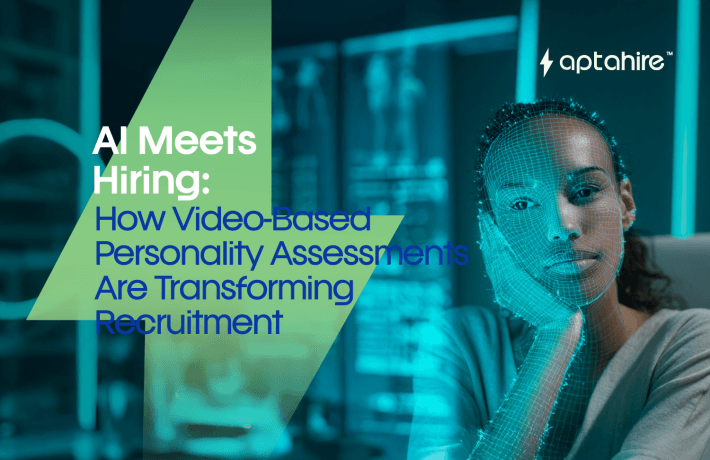How to Use Recruitment Analytics to Improve Hiring Decisions

How Recruitment Analytics Can Help You Hire Smarter
Hiring the right people is tough, especially in today’s competitive job market. But what if you had a secret weapon to make better hiring decisions? Here comes recruitment analytics, a game-changer that helps you use data to streamline hiring, find top talent, and reduce turnover. Let’s break it down in a way that’s easy to digest.
What’s Recruitment Analytics, and Why Should You Care?
Think of recruitment analytics as your hiring GPS. It collects and analyzes data from different stages of your hiring process, helping you make informed decisions. With metrics like time-to-fill, time-to-hire, and quality of hire, you can fine-tune your approach and get better results. In fact, 50% of recruiters already use data to predict candidate success.
How Can Analytics Fix Hiring Challenges?
Every company faces hiring headaches; long recruitment cycles, high turnover, or struggling to find the right fit. Recruitment analytics helps by identifying problem areas and giving you the insights to fix them.
For example, if a certain interview stage slows things down, the data will highlight it, so you can adjust accordingly. Plus, predictive analytics can help reduce turnover by identifying the traits of employees who thrive in your company, allowing you to hire candidates who are more likely to stick around.
AI: The Secret Sauce to Smarter Hiring
Artificial intelligence (AI) is taking recruitment analytics to the next level. Tools like Aptahire, HireVue and Pymetrics use AI to evaluate skills, experience, and even cultural fit, helping you make more data-driven hiring decisions.
How Do You Know It’s Working?
Once you start using recruitment analytics, you’ll want to measure its impact. Keep an eye on key performance indicators (KPIs) like quality of hire, candidate satisfaction, and retention rates. You can also track Employee Net Promoter Score (eNPS) to see how engaged new hires are. A Harvard Business Review study found that companies using people analytics saw a 20% boost in employee performance.
Top Recruitment Analytics Tools to Check Out
If you’re ready to dive in, here are some great tools to get started:
- LinkedIn Talent Insights – Provides market trends and competitor analysis
- Google Hire – Helps track your candidate pipeline more efficiently
- Workday Recruiting – Uses AI-driven insights for better hiring decisions
Aptahire- Your AI Hiring Assistant
As HR professionals, we know that making the right hiring decisions requires more than just a resume review, it’s about understanding a candidate’s true potential. Aptahire is an AI-driven hiring platform that enhances this process by providing detailed post-interview insights. After each interview, it delivers AI-powered evaluations and real-time feedback analysis, generating comprehensive reports that highlight a candidate’s strengths and areas for improvement. These data-driven insights help recruiters make well-informed decisions, ensuring we select the best-fit candidates with confidence.
What makes Aptahire even more valuable is its ability to eliminate guesswork in hiring. Instead of relying solely on intuition, recruiters can leverage structured feedback, sentiment analysis, and performance metrics to compare candidates objectively. This not only improves hiring accuracy but also enhances fairness and reduces bias. By integrating Aptahire into the recruitment process, HR teams can make smarter, faster, and more strategic hiring decisions.
Wrapping It Up
Recruitment analytics isn’t just a fancy buzzword; it’s a powerful tool to help you hire smarter, faster, and better. By embracing data-driven hiring, you’ll attract top talent, reduce costly hiring mistakes, and stay ahead of the competition. So, are you ready to make recruitment analytics a part of your hiring strategy? Start by analyzing your current process and exploring the tools that fit your needs!
FAQs
1. What is recruitment analytics, and why is it important?
Recruitment analytics is the process of using data to assess and improve hiring decisions. It helps organizations track key metrics like time-to-hire, candidate quality, and employee retention, leading to more efficient and informed recruitment strategies.
2. How can recruitment analytics reduce hiring time?
By analyzing past hiring data, recruiters can identify bottlenecks in the hiring process, such as delays in resume screening or interview scheduling. Automation tools powered by AI can also help streamline tasks, making the entire process faster and more efficient.
3. What key metrics should we track in recruitment analytics?
Some essential recruitment KPIs include:
- Time-to-hire: The time taken from job posting to candidate acceptance.
- Quality of hire: The long-term performance and retention of new hires.
- Cost-per-hire: The total cost involved in recruiting a candidate.
Candidate experience score: Feedback from applicants about the hiring process.
4. How does AI enhance recruitment analytics?
AI-powered tools analyze large volumes of candidate data to predict job fit, automate screening, and even assess cultural compatibility. Platforms like Aptahire and Pymetrics use AI to make data-driven hiring decisions and reduce biases.
5. What tools can help implement recruitment analytics?
Some popular recruitment analytics tools include:
- LinkedIn Talent Insights – For market trends and competitor benchmarking.
- Google Hire – To track and manage candidate pipelines.
- Workday Recruiting – For AI-driven hiring insights and predictive analytics.



